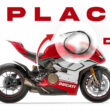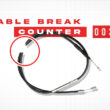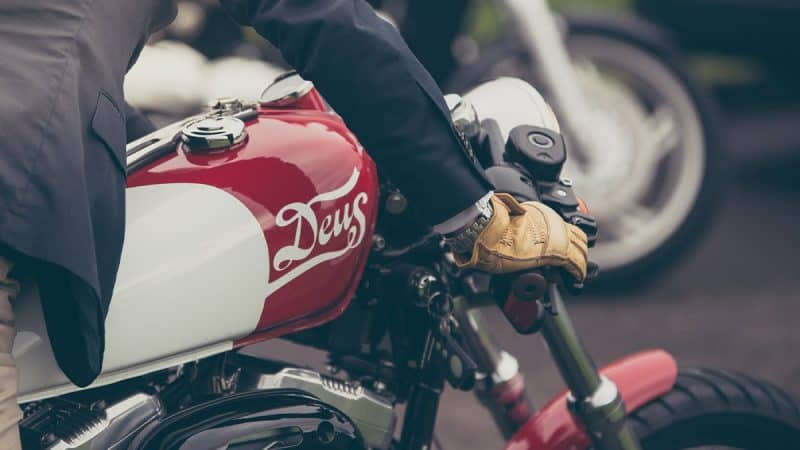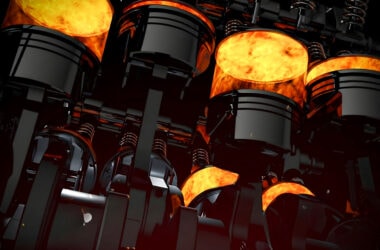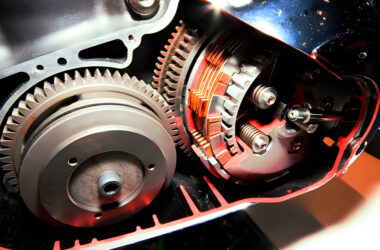Table of Contents Show
Most of you know how to push start, if you don’t we can help you it’s not a big deal. But there can be multiple other reasons which contribute to failure in push-starting and even in the regular start, Today we will know how to identify and fix these problems too.
Here’s A Step By Step Guide On How
To Push/Bump Start A Fuel Injected Motorcycle
Push starting a fuel-injected motorcycle is easy, but having a friend who can push your motorcycle or an incline (slope) where you can catch speed easily is helpful but not a must.
Step 1 – Insert The Key And Put The Engine Kill Switch In On/Run mode
The first step is plain and simple but there is a caveat.
Inserting the key is easy but the engine kill switch might be damaged and can go unnoticed which won’t let your motorcycle start.
So check it and fix it if necessary.
Step 2 – Engage The Right Gear While Push Starting
Engage the motorcycle in second or third gear and start pushing the motorcycle while the clutch is engaged.
Some motorcycles are easier to start in 3rd gear while others in 2nd gear. It depends from motorcycle to motorcycle and their engine type.
Step 3 – Gain The Right Amount Of Speed
Push the motorcycle until the speed reaches 5-6 MPH / 8-10 KPH or more.
Again it depends on the motorcycle and its engine type, but the general to have a successful push start is to gain as much speed as you can for the engine’s internal components to get moving.
Step 4 – Release The Clutch Lever In A Right Way
Once you have achieved enough speed, release the clutch lever. But don’t take your hands off completely from the clutch lever.
So many people do this mistake which causes the motorcycle to have a sudden jerk due to a high amount of power surge, which can cause an accident due to instability if not handled properly.
Step 5 – Pull In The Clutch Lever As Soon As
As soon as you hear the engine ignition, pull in the clutch immediately and keep on accelerating gently.
Pulling in the clutch to avoid that sudden jerk as we mentioned in the previous step.
You pull in the clutch because sometimes you might use the steep slope to push start which can help you gain high speed but keep in that you are starting the motorcycle in a lower gear where the rpm is higher.
So it is a safe practice to pull in the clutch as soon as possible when you feel the motorcycle’s successful engine ignition.
Step 6 – Put The Motorcycle Back In Neutral Or 1st Gear
Put the motorcycle back into 1st gear before taking off to avoid motorcycle bogging/jerking.
Or in neutral gear to let the engine warm up for a couple of seconds.
Step 7 – Enjoy The Ride But With Safety
Enjoy the ride and get your battery fixed or replaced as soon as possible if it has problems.
Keep in mind that apart from bad
battery, there are other reasons which can fail motorcycle start.
These reasons will cause the motorcycle to not start at all regardless of doing a push/bump start.
And we will learn how to fix these problems to have a successful push/bump start.
The reason for a motorcycle being engaged in second or even in third gear is due to the torque.
The torque is too high in the first gear, which might result in rear-wheel locking or skidding.
The torque is high, and power is low in a lower gear. And the power is high and the torque is low in a higher gear.
So always try to push start in 2nd or 3rd gear cause it varies from motorcycle to motorcycle.
But before getting into the other reasons which cause motorcycles to not start, here’s a quick explanation of how to push start works in an easy way.
How Does Push Start Work
To start the engine you must get the flywheel rotating.
Normally the flywheel is rotated by simply pressing the self-start button.
By pressing the self-start button the engine starter motor, shaft and pinion start to rotate which are attached to the flywheel.
Since the battery is dead no electric current can be passed to the starter motor, which will rotate the flywheel.
So in this case, you have to get the flywheel rotating manually.
When you start pushing the motorcycle the flywheel, crankshaft, and piston all starts to rotate.
Once all the components are rotating, just pop the clutch and pull it back in to keep the motorcycle in an idle state.
This is how push start works in motorcycles both fuel injected and carburated.
Motoxtasy Pro Tip: Single cylinder motorcycles are much harder to push start compared to twin cylinder. And it gets easier, with four-cylinder engines compared to triple-cylinder engines. The components inside the engine which are needed to spin/rotate move easily inside inline-four engine/cylinder motorcycles compared to triple, twin, and single cylinder. So a higher amount of speed and weight is needed to push start a single-cylinder motorcycle which you can do by sitting on the motorcycle while someone is pushing from behind or using a decent slope to get the cylinder or cylinders moving.
Reasons Why Push Starting Fuel Injected Motorcycle Might Fail
Mentioned below are the top reasons why your motorcycle won’t start when push starting or even a regular start if your battery is in good condition but you are still unable to have a successful push start.
If you want to know about these reasons in detail and various ways to fix these problems given below then check our article on how to properly cold start your fuel-injected motorcycles ( go to the reasons section of the post ) in which we have mentioned some common causes which contribute to failure in starting your motorcycle. But if you want a quick overview, carry on reading we have a few different reasons mentioned in this article too.
1. Dead Battery
The reason you are push-starting the motorcycle is due to the battery not having enough juice to power up the engine.
But if your battery is extremely low on charge (dead) it means that the battery won’t have enough charge to perform basic operations like turning on the headlights, instrumental cluster, and blinkers (indicators).
2. Foul Spark Plug
A spark plug is one of the most important components in an IC engine, as it ignites the spark in the combustion chamber.
The combustion happens with the help of the spark ignited. If the spark plug is clogged or damaged the spark won’t be able to ignite which in turn won’t start the motorcycle.
So try to clean it and install it again and if it’s damaged replace it with new ones.
3. Clogged Worn Fuel Injector
If the fuel injector is clogged the fuel won’t pass from the fuel tank to the inner wall of the combustion chamber.
The work of the fuel injector is to spray fuel in the cylinder, if the fuel injector won’t pass the fuel in the cylinder the ignition won’t happen.
4. Blown Out Or Losing Contact Fuse In Fuse Box
A fuse is installed inside the fuse box of every modern motorcycle.
The fuse protects the bike’s electrical components, electric circuits, and wires from overcurrent.
If an excess amount of current (ampere) is passed through the circuit, the fuse will blow to protect the circuit.
There are many fuses for ignition, A.B.S., traction control, headlight, horn, signaling fuse, etc.
Open the fuse box and check for the fuse which is transparent to see the fusible element ( metal strip ) inside it is intact and not broken.
Also, check for damaged pins of fuse and you can also use the circuit tester/test light tool to check if the fuses are working or not.
5. Malfunction In The Starter Motor
A starter motor is a device used to crank (start rotation of the flywheel which is connected to the crankshaft getting the pistons moving and causing combustion with the help of a spark ) that starts the engine.
If the starter motor fails to crank your motorcycle won’t be able to start.
6. Rusty Or Damaged Starter Relay
A starter relay is a remote control switch that regulates the current in the electric circuit. It closes the electric circuit in other words, it lets the electric power flow from the battery to the starter motor in your motorcycle to start.
If the battery & starter motor is in good condition and you are still unable to start the motorcycle by pressing the starter button, or even push-starting.
A bad or damaged starter relay due to corrosion might be the problem.
7. Damaged HT Cable ( Spark Plug Wire )
The ( ignition coil/spark plug wire ) of the motorcycle transforms 12 V from the battery into 1000 V+ to produce an electric spark.
As the current has to jump between the anode to the cathode of the spark plug, 1000+ voltages are required which is produced by the spark plug wire also called HT cable or ignition coil.
If the ignition coil is damaged the spark won’t be produced and the engine won’t start.
8. Clogged Air Filter
If the air filter is clogged, the air won’t be able to flow to the engine as we know that air is needed for ignition(catching fire).
We wrote an article on what to do if your motorcycle air filter gets wet or dirty and how to fix it, give it a read! What Happens If The Motorcycle Air Filter Gets Wet: Easy Fix
It is easy to identify whether the air filter is the culprit.
Remove the air filter and try to start the motorcycle, if it starts then probably the air filter is clogged and needs replacement or some thorough cleaning.
9. Engine Seize
If the engine is seized ( piston rings are expanded towards the cylinder walls due to the friction ) the ignition inside the cylinder won’t be enough to get the position in a reciprocating motion ( moving backward and forward in a straight line ).
This occurs due to a lack of maintenance and lubrication of the engine.
Is It Harder To Push Start Fuel-Injected Motorcycles
One can only push-start modern fuel-injected motorcycle if the battery has some charge in it (not completely dead).
For old smaller engine motorcycle with a kick-starter might be able to start with a dead battery.
Inspection is easy, turn on the headlight and indicators if they are working it means that the battery has enough power to push start the motorcycle.
In fuel-injected motorcycles, everything is controlled by the E.C.U. (engine control unit, brain, or computer of the motorcycle).
If the battery has enough power to turn on the E.C.U. then and only then you can push start a fuel-injected motorcycle.
Conclusion
In other words, push-starting modern bigger engine fuel-injected motorcycle is possible if there is the battery is not completely dead and does not have other reasons mentioned above which can fail push start and even a regular start.
For older smaller engine motorcycles ( 150CC-250CC ) with kick-starter, you can start the motorcycle without the battery.

